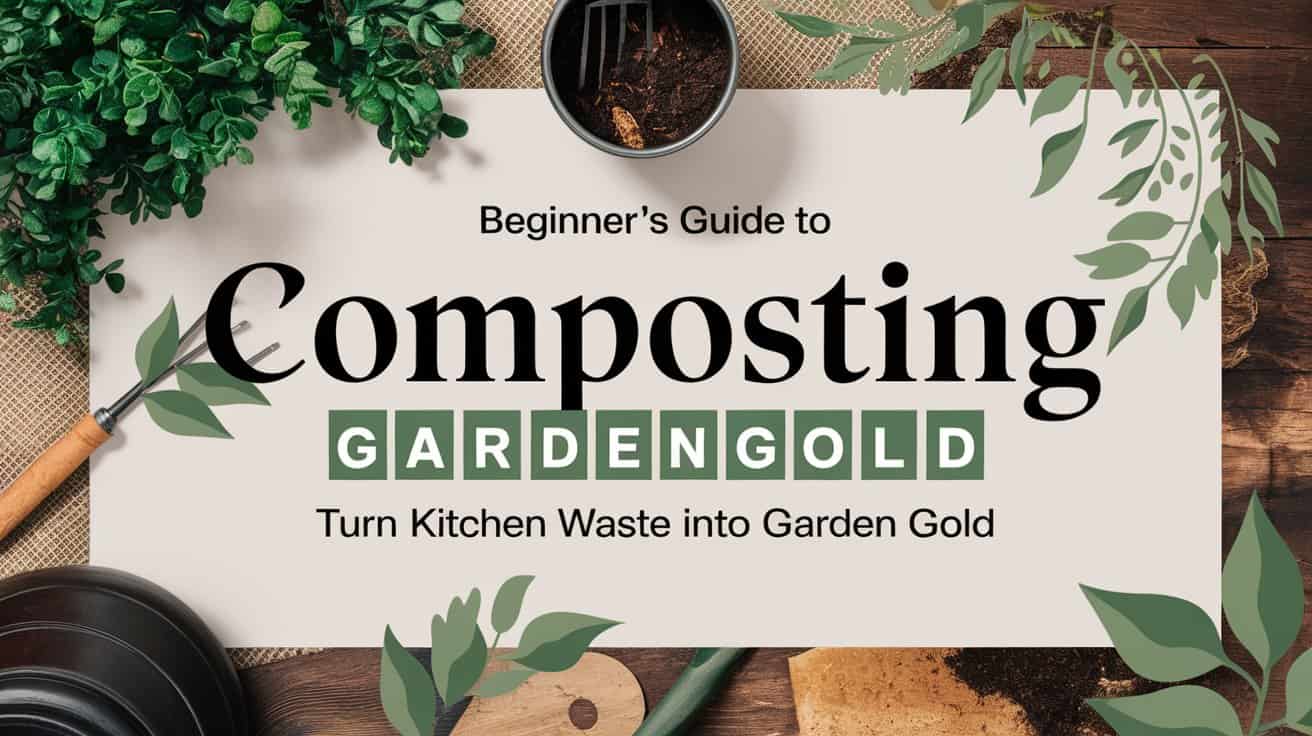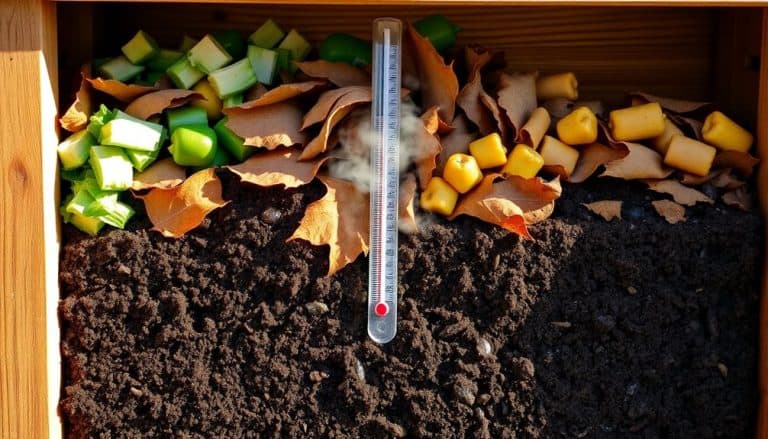This website contains affiliate links. Some products are gifted by the brand to test. As an Amazon Associate, I earn from qualifying purchases. The content on this website was created with the help of AI.
Composting is one of the best ways to reduce household waste while creating nutrient-rich soil for your garden. Instead of throwing away fruit peels, vegetable scraps, and coffee grounds, you can transform them into “garden gold”—a natural fertilizer that improves soil health and boosts plant growth.
If you’re new to composting, don’t worry. This guide will walk you through the essentials of how to start composting, what materials to use, and how to maintain a successful compost pile with minimal effort.
What You Might Need
- A compost bin or designated composting area
- Brown materials (dry leaves, cardboard, newspaper)
- Green materials (vegetable scraps, coffee grounds, grass clippings)
- A garden fork or shovel for turning the compost
- A watering can (if needed)
1. Understanding Composting: The Basics
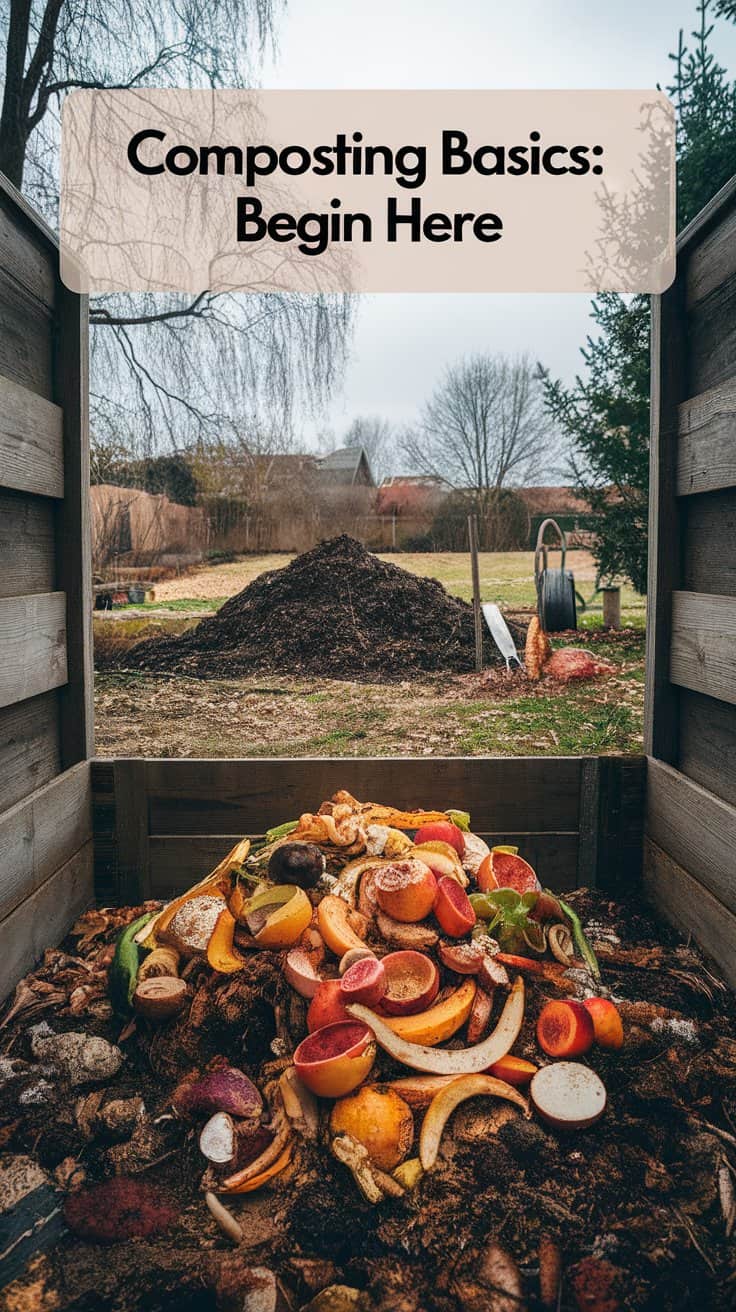
Composting is a natural process where organic materials break down into a nutrient-rich soil amendment. It works by combining nitrogen-rich (green) materials with carbon-rich (brown) materials, allowing microbes and worms to decompose them over time.
- Step-by-Step Idea: The key to successful composting is maintaining a balanced ratio of green and brown materials, keeping the pile aerated, and ensuring proper moisture levels.
- Pro Tip: Compost should be moist but not soaking wet—like a wrung-out sponge.
Picture This: A neat compost pile in the corner of your garden, turning food scraps into dark, nutrient-rich soil for healthy plants.
2. Choosing the Right Composting Method

There are different ways to compost depending on your space and lifestyle.
Backyard Composting
- Best for homeowners with outdoor space
- Uses a compost bin or a simple open pile
- Requires occasional turning for aeration
Vermicomposting (Worm Composting)
- Ideal for small spaces and indoor composting
- Uses red worms to break down food scraps in a bin
- Produces worm castings, a powerful natural fertilizer
Bokashi Composting
- A fast, anaerobic (no oxygen) composting method
- Uses beneficial bacteria to ferment food scraps
- Works well for meat and dairy, which traditional composting avoids
- Step-by-Step Idea: Choose a composting method based on your space and how much waste you generate.
- Pro Tip: If you’re short on space, vermicomposting is a great way to compost indoors with little to no odor.
Picture This: A tidy compost bin tucked away in a backyard or a worm bin discreetly placed under the kitchen sink, effortlessly breaking down food scraps.
3. What to Compost (and What to Avoid)
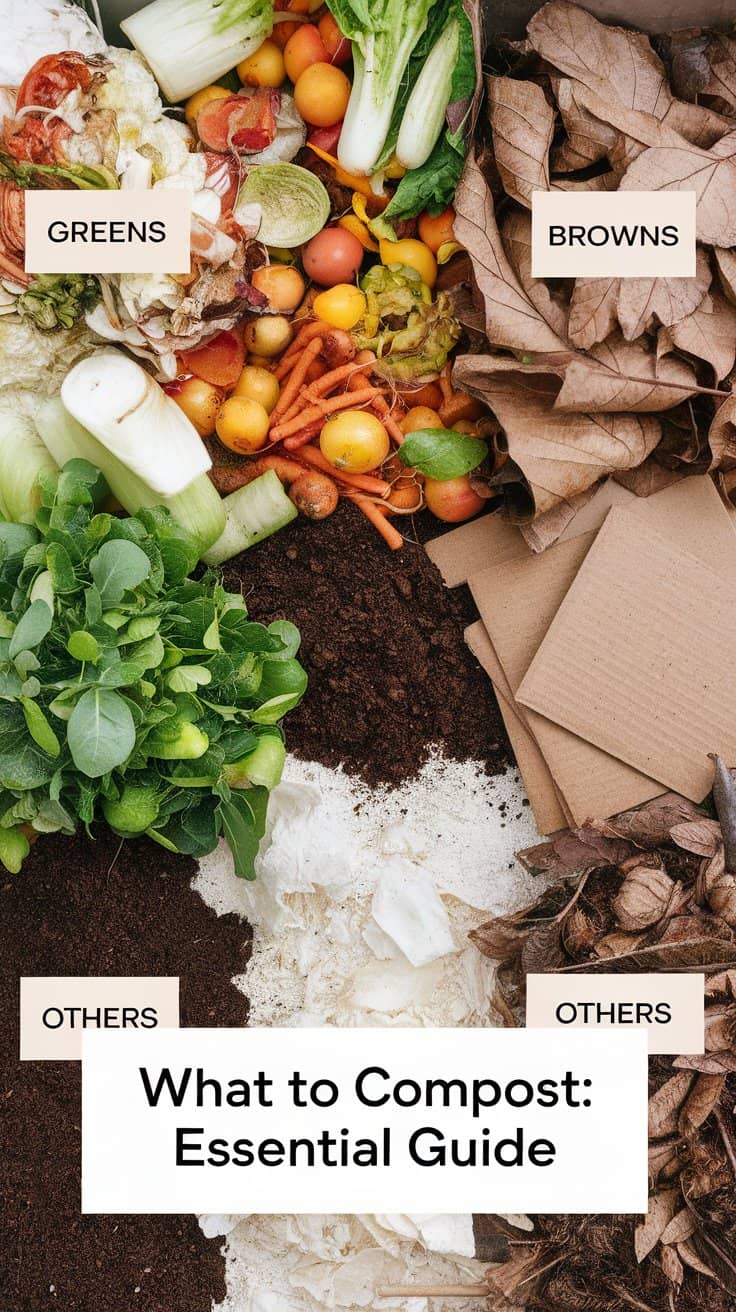
Knowing what to add to your compost pile is essential for proper decomposition and avoiding pests.
What to Add:
- Greens (Nitrogen-Rich): Fruit and vegetable scraps, coffee grounds, tea bags, eggshells, grass clippings
- Browns (Carbon-Rich): Dry leaves, cardboard, shredded newspaper, straw, untreated wood chips
What to Avoid:
- Pest Attractants: Meat, dairy, greasy food, bones
- Toxic Materials: Treated wood, glossy paper, synthetic fabrics
- Diseased Plants & Weeds: Can spread disease or regrow in the compost
- Step-by-Step Idea: Layer greens and browns to maintain balance and speed up decomposition.
- Pro Tip: Shred large materials like cardboard and leaves to help them break down faster.
Picture This: A well-layered compost pile with visible sections of greens and browns, decomposing into dark, fertile soil.
4. Building and Maintaining Your Compost Pile
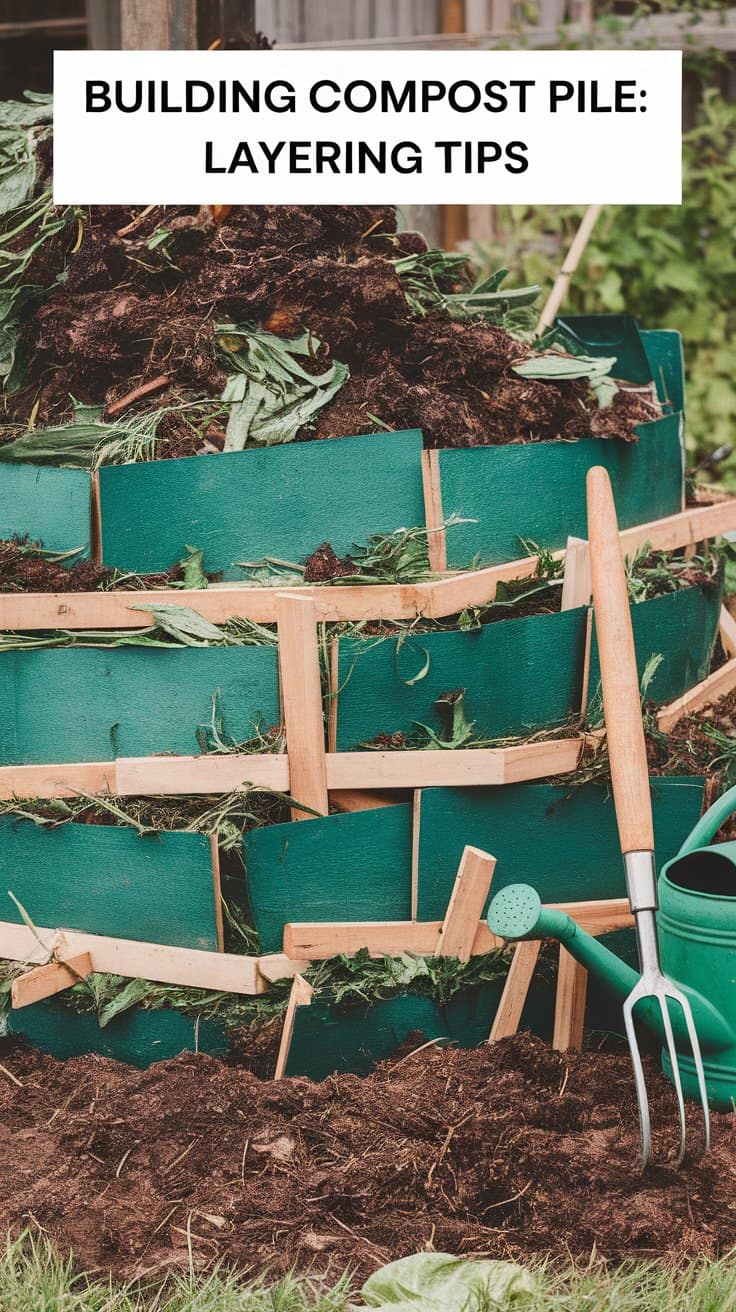
Once you’ve gathered your materials, it’s time to start building your compost pile.
- Step-by-Step Idea:
- Begin with a base layer of browns for aeration.
- Add a layer of greens, followed by another layer of browns.
- Continue layering until you have a balanced mix.
- Turn the compost every one to two weeks to speed up decomposition.
- Pro Tip: If your compost smells bad, add more browns to balance excess moisture. If it’s not breaking down, add more greens and turn the pile to introduce oxygen.
Picture This: A compost heap in progress, neatly arranged in layers, slowly transforming into rich, earthy compost.
5. How to Use Finished Compost in Your Garden
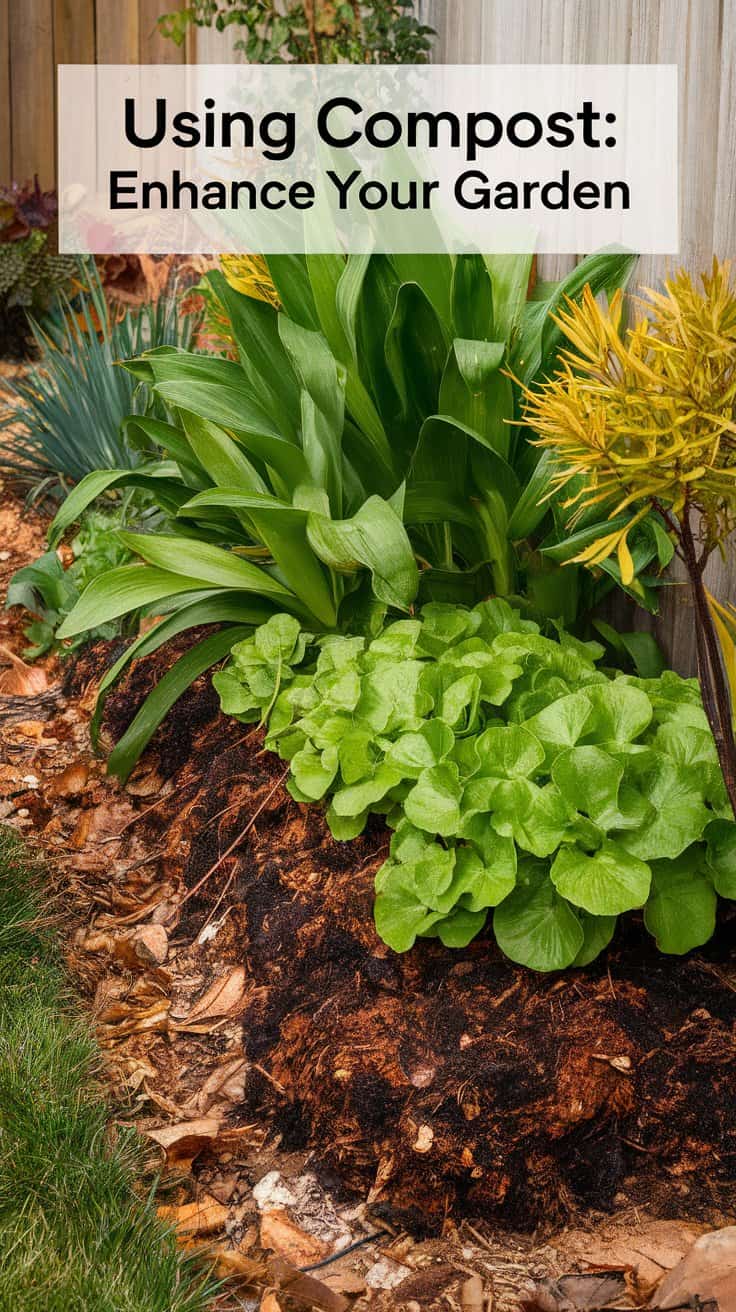
Finished compost is dark, crumbly, and has a pleasant earthy smell. It can be used in multiple ways to improve soil health and boost plant growth.
Ways to Use Compost:
- Mix into garden beds: Add compost to your soil to improve texture and fertility.
- Use as mulch: Spread compost around plants to retain moisture and suppress weeds.
- Create compost tea: Steep compost in water to create a liquid fertilizer for plants.
- Revitalize potted plants: Mix compost with potting soil to refresh indoor and outdoor planters.
- Step-by-Step Idea: At the beginning of each growing season, add a few inches of compost to your garden beds.
- Pro Tip: Don’t plant directly in pure compost—mix it with soil to prevent nutrient overload.
Picture This: A thriving vegetable garden, rich with compost-enhanced soil, producing lush and healthy crops.
Final Thoughts
Composting is one of the easiest and most effective ways to reduce kitchen waste while creating a free, natural fertilizer for your garden. By following these simple steps, you’ll not only cut down on landfill waste but also enrich your soil and support a more sustainable lifestyle.
Whether you start with a simple backyard pile or try vermicomposting indoors, the benefits of composting are well worth the effort. Begin today, and in just a few months, you’ll have “garden gold” to nourish your plants and create a greener future.

